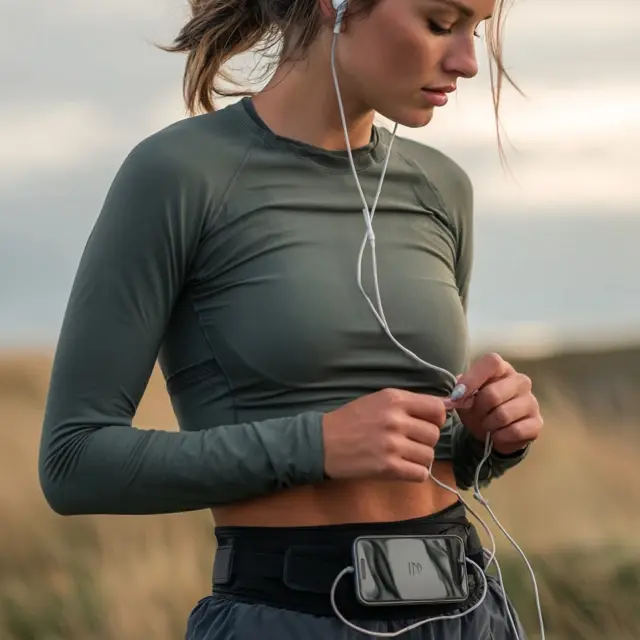How to Select a Running Belt That Works with Headphones
Music can be the perfect motivator on a run, but not every running belt is designed to work seamlessly with headphones. Whether you prefer wired or wireless, the right belt ensures your music is easily accessible, your gear is secure, and your stride stays uninterrupted. Here’s how to choose one that supports your listening style.
Step 1: Decide Between Wired and Wireless
Your choice of headphones will influence which running belt features matter most:
- Wired headphones: Look for belts with headphone ports or passthrough slots so wires don’t get tangled.
- Wireless headphones: Focus on belts with quick-access phone storage to manage Bluetooth connectivity without hassle.
Step 2: Pocket Placement Matters
The location of your phone pocket affects headphone use:
- Front pockets: Convenient for wired connections and fast access.
- Side pockets: Keep wires closer to your arm swing for reduced tangling.
- Rear pockets: Great for wireless use, but wires may feel awkward when routed forward.
Step 3: Look for Headphone-Friendly Features
Some belts are built with audio in mind. Features to consider include:
- Dedicated cord holes: Prevents damage from forcing wires through zippers.
- Water-resistant linings: Protects electronics from sweat while listening on the move.
- Touchscreen-compatible windows: Lets you change tracks without removing your phone.
Step 4: Ensure Stability While Listening
A bouncing belt can tug on headphone cords or disrupt wireless signals. To avoid this:
- Choose belts with snug, adjustable fits.
- Opt for wide waistbands to distribute weight evenly.
- Test your stride with headphones connected before long runs.
Step 5: Comfort and Safety Considerations
Listening to music while running should enhance—not hinder—your experience:
- Pick lightweight belts that don’t add bulk to your setup.
- Ensure wires can be routed away from high-friction areas to prevent chafing.
- Look for reflective accents to stay visible during evening runs with headphones in.
Tips for Different Runners
For Wired Headphone Users
Choose a running belt with a secure headphone port and short cord routing to keep wires tidy and out of your stride.
For Wireless Headphone Users
Focus on stability and easy-access storage for your phone, ensuring Bluetooth stays connected throughout your run.
Conclusion
Selecting a running belt that works with headphones comes down to matching belt design with your preferred audio setup. Wired users should prioritize ports and routing options, while wireless users benefit from secure, bounce-free designs. With the right belt, your music can motivate you mile after mile without distraction.
For more insights, check out our running gear music tips and fitness accessories designed for audio lovers.




